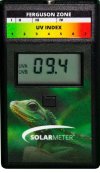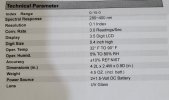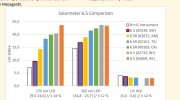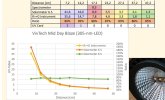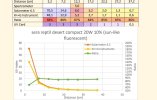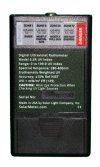I just got my UVI Meter. I think it works the same as the Solar Meter 6.5 but only cost half the price. USD98 in Amazon (I got it at USD51 in Hong Kong). Anyone who cannot afford a 6.5 can consider buying this. Hope this help
But I have a question about using these meter. When we measure, we need to hold it perpendicular to the UVB light. If we do so, the detector will not be in the same height with the tortoise. How can I get an accurate reading same height as the tortoise?

But I have a question about using these meter. When we measure, we need to hold it perpendicular to the UVB light. If we do so, the detector will not be in the same height with the tortoise. How can I get an accurate reading same height as the tortoise?

